New Battlefields
Phil Neel
The Turkish collective e-Komite interviews American communist geographer Phil Neel.
Other languages: Deutsche 1 und 2, Türkçe
Your book, Hinterland: America’s New Landscape of Class and Conflict, was published in 2018. In an interview with Paul Mattick, you call it “a book of communist geography.” How would you define communist geography? What can it help us understand?
On the one hand, it’s just a good, concise description, since I’m both a communist and a geographer — so the political questions are, for me, naturally inseparable from the spatial ones, and crisis is best portrayed as producing a literal economic landscape. I also argue that there have been very concrete changes in the geography of unrest in the US and also specific geographic limits that have been difficult to overcome in the midst of recent rebellions. These limits recur in each new cycle of riots, for example, which tend to gravitate toward empty downtown corridors and symbolic halls of power, all of which makes for a decent spectacle but really isn’t as threatening or disruptive as it seems.
But at a deeper level, anyone familiar with communist or anarchist organizing in the US probably recognizes that there is a persistent inability to really embed any political project in an area without reducing it to either a toothless activist NGO project or an edgy but ultimately inaccessible subcultural scene. There’s a real inability to inhabit space in any way that doesn’t become immediately depoliticized. It might not seem like a “geographic” problem but it really is — and it signals a much deeper atomization in everyday life that’s very difficult to overcome. So, in several senses, there are very concrete questions of political organizing that have an immediate spatial dimension to them. That’s why the geography part is important.
On the other hand, you also have to have the communist part in there. My use of the phrase is a kind of pre-emptive attack to prevent people from associating the book with “Marxist geography,” “radical geography” or, even worse, that miserable contradiction called “Marxist political economy.” These are usually very distant, academic forms of inquiry that don’t really get any blood on their teeth, so to speak, even if they might sometimes give some helpful insight. Ultimately, it’s not so surprising when it turns out that the de facto political activity of prominent “Marxist” academics lies to the right of your average DSA canvasser. Almost none have retained fidelity to the insurrectionary dimension of Marx’s own project over time, which was inseparably linked to the incendiary core of communist inquiry as such. This is easy to test in the US, nowadays: just ask them where they were in the summer of 2020. So the idea behind using a term like “communist geography” is to also place that fidelity to the communist project back at the heart of the inquiry.
Elsewhere you’ve claimed that Hinterland was written as a response to the “poor cognitive mapping of politics and economics in the US today.” What do you think is wrong, insufficient or weak in today’s analysis of the working class and its geographical dimension?
Basically, Seattle was the first American city I’d ever lived in. I moved there after a lifetime spent in the countryside and, initially, I couldn’t even afford to stay in the city itself. Instead, I lived in hotel rooms and camp sites in the suburban and exurban fringe — these are hyper-diverse neighborhoods, for the most part and, outside the suburban tech enclaves, they are fairly poor and stand in contrast to the extremely wealthy urban core. Then, when I moved into the city and got involved a bit in local leftist politics, I was shocked at the basic dissonance between how people conceptualized the city and how it was laid out in reality. Many people seemed to have no clue where most of the poor people in the metro actually lived: in the suburbs. So their political imaginary just didn’t include these places. They had this fantasy version of the city inherited from the New Left, with its emphasis on “inner city” organizing within distinct ethnic enclaves. In this American leftist imaginary “the suburbs” means white people, even though in Seattle it’s just the opposite: the inner city is more white than the suburbs.
So you had this ironic phenomenon where a bunch of leftists living in the already-gentrified urban core treated that area like it should be the focus of all organizing and seemed to be pretending that the last decade or two of displacement just hadn’t happened. It reminds me of ghosts just going about their daily business, churning butter or whatever, even though the places they’re haunting have been completely changed. Meanwhile, none of the leftist organizers actually wanted to live in the suburbs where the poor people were concentrated, because they of course cherished their nice urban lifestyle — and the suburbs have horrible urban design, an aging housing stock, you have to buy a car to live there, etc.
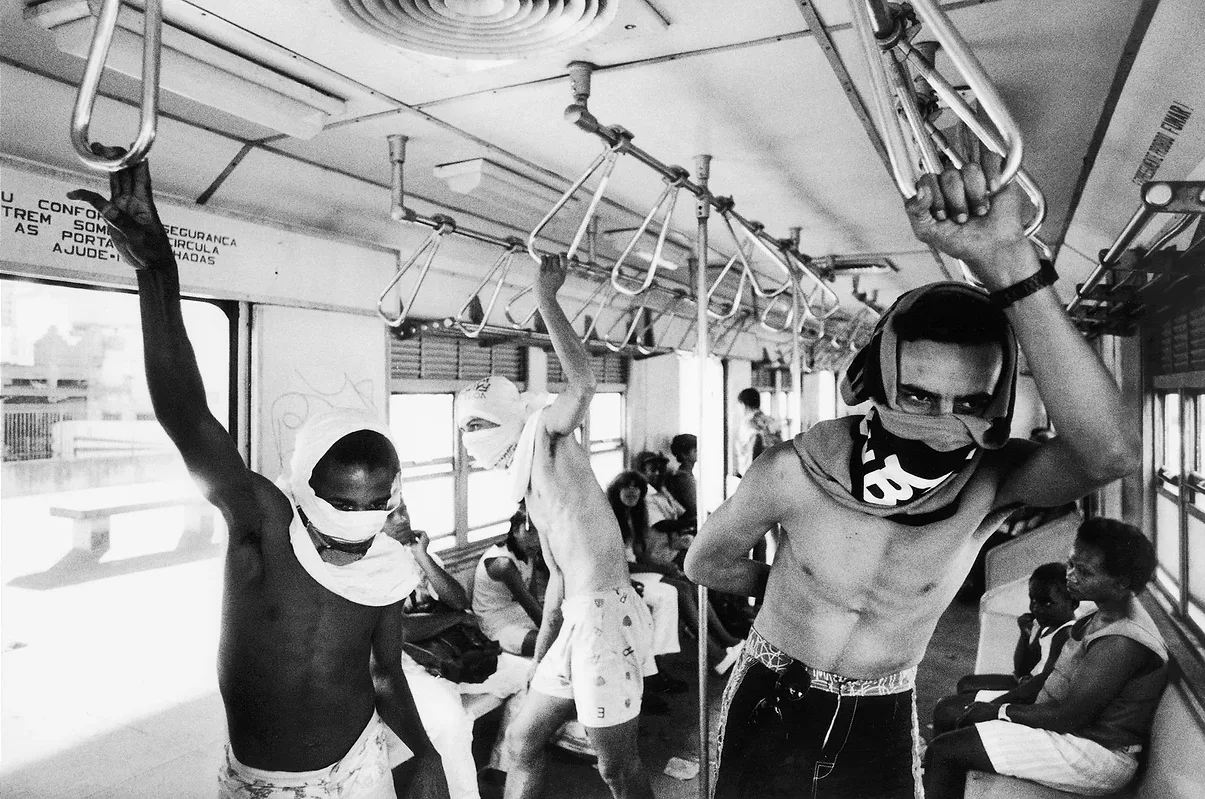
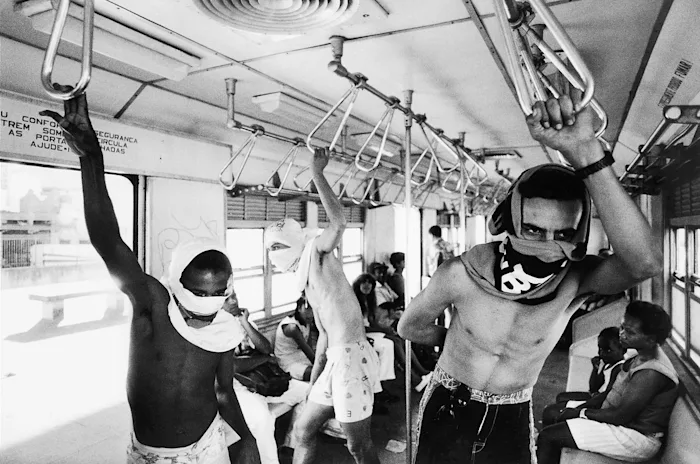
At the time, there wasn’t even an attempt to really think about how you might conduct political organizing in hyper-diverse suburban neighborhoods like that. Today, it’s a bit different, but not by much. People mostly pay it lip service, then proceed to try the same organizing strategy that’s doomed to fail again and again, just in new neighborhoods. But if anyone has had any modicum of success organizing in these places in the decade since, it has been the progressive wing of the democratic party and their web of unions and NGOs, including their junior partners in the DSA.
Then, on top of this were all the horrible opinions people seemed to have about ruralites or those from distant hinterland cities — small metro areas far from the orbit of the major urban centers, usually reliant on just a few main industries. This included assumptions that rural America is all white people, that they’re all racist and conservative, etc. This is, of course, just plain wrong. Nor is this sort of moral calculus actually helpful in understanding of the violent history of settler colonialism and the ideological monstrosities that emerge from the collapsed mirage of the white settler utopia — I document several of these in the book, when examining the mythos of the far right. But it also serves a more nefarious ideological purpose, since it prevents any real organizing links from being built with the countryside and tends to turn rural migrants in the cities away from any of this political organizing, even though they tend to be much poorer on average and are already predisposed toward a critique of the status quo.
So, bad cognitive mapping basically means: you don’t know what’s around you, you don’t know how people actually live or where anything actually is, and you obviously can’t formulate any kind of strategy around organizing when this is the case because everything you will do will just fail. You’re like a ghost wandering through halls that don’t exist anymore.
Your book puts forward the geographical notion of the “hinterland,” which is reminiscent of older concepts like “periphery,” “rural” or “fringe.” But you actually redefine a geographical area within a specific context. Without abolishing these older terms you suggest a new way of looking at the geographical extension of the global working class. How has the significance of those areas changed?
The hinterland is best understood as the hinterland of capital, or the hinterland of accumulation — an area that is outside the centers of management and profit but not really external to it, in the same way that a classic agrarian hinterland both feeds the city it encircles and is dependent on that city. I use the term because it emphasizes that capitalism is a totality that has spread across the entire world. So the hinterland is global in scope. There is no more “outside” to the capitalist system. For example, even the most distant, uncontacted groups in the heart of the Amazon now live within a climate that’s being fundamentally reshaped by the imperatives of never-ending accumulation, so they’ve been drawn into the orbit of capitalism whether they like it or not. In the past, you could argue that the world had other centers of gravity: old modes of production that were maybe on the decline but within which a large portion of the world’s population still lived. Or, at least, you could maybe portray the really-existing socialist states like this, regardless of debates about the exact nature of the USSR or socialist-era China.
But none of this is true anymore. Now there is a single center of gravity and whatever has not already collapsed into it is in a degenerating orbit, its motion defined by capitalism even if indirectly. Not only has the Eastern bloc collapsed and China undergone a capitalist transition (those who think otherwise don’t really understand the basic definitions, and should read the journal Chuang), but the world as a whole has undergone a long and violent process of “depeasantization.” Even areas like Sub-Saharan Africa — where a large share of the population once subsisted more or less directly off the land — have seen increasing dependence on the market, such that it’s not incorrect to say that the vast majority of the world’s population now depends on commodity society for survival, even if somewhat indirectly.
This is very important because it changes some of the coordinates that we’ve inherited from past incarnations of the communist movement. The idea of the “hinterland,” and the fact that it’s global, is an attempt to emphasize this political point. There is no “periphery” anymore, because there is no “edge” to capitalism. This is really important, because it pretty decisively shatters the whole edifice of crisis theories based in the idea that capitalism can only survive by plundering the non-capitalist territories that surround it or interpenetrate it. So how can we understand things like imperial dependency without framing capitalism as little more than a parasite feeding off of the non-capitalist world? Similarly: how do we understand crisis and the long-term prospects of the system, if we recognize the plain and evident fact that the system didn’t collapse when it became truly global?
Understanding both the historical plunder that spread capitalism across the globe and class struggle as it really exists today requires a fully immanent understanding of how capitalism works, on its own terms. This also means that we need a theory of how communism might emerge from class war within capitalism, without gesturing toward utopias beyond the periphery — whether in the form of the peasant and indigenous societies idealized by distant leftists or the mirage of the old state socialist projects. That’s the core, political importance of the notion of the hinterland, and what makes it relevant beyond the US.
In Turkey, the neoliberal Islamist AKP has been in power for almost 20 years now. Its main electoral base remains the working class in the regions where we may call the Turkish hinterland. Marxist scholar Cihan Tuğal claims that the Islamist movement is one of the two major political movements in Turkey that has been employing Leninist methods of organization since the 70’s. In his article The Rise of the Leninist Right, he also argues that there is a similar organizational structure in the American right-wing politics. This claim somehow coincides with your depictions of the alt-right presence and militia formation in the American midlands. You assert that the Democrats see the American hinterland as a sacrificial zone and only the Republican Party organizes in those areas. If we consider the contexts of Turkey and the US together, can we say that the political right (globally) have a natural upper hand in the hinterland, or that they discovered its potential earlier than us and have invested themselves in the prevention of any class warfare?
There was a fad in American political commentary during the latter half of the 2010s, where journalists would use these old Leninist metaphors to describe the rise of Trump. This was even cultivated by people involved in that campaign, such as Steve Bannon. But it soon saw prominent liberal media outlets making equally stupid comparisons. Let me be clear: there is absolutely nothing “Leninist” about how the far right is mobilized in the US, unless you are using the term to mean nothing more than “slightly organized.” Even more than this: I think the attempts to compare the US far right to something like Hezbollah or, in your case, the support base for the AKP, basically miss the fact that American politics are almost universally a shitshow, inside and out. Pretending that they’re hyper-disciplined or even that they have the genuine populist support that the Islamists were able to build in many hinterland areas is giving them way too much credit.
Now, the kernel of truth here is that, in the US, there is a widening space for something like this to happen in the future, and the far-right may be better poised to exploit it in the coming decades. That’s absolutely not the same thing, however, as arguing that this capacity already exists. I mean, in Lebanon, Hezbollah’s ascent in some of the poorest parts of the hinterland can at least in part be attributed to the fact that they ran popular “social development” programs, opened schools, hospitals and charity wings to support the families of fighters who died in battle. Let’s be frank: the special sort of idiots that populate the American far right today could never do any of this. Imagining them trying to run a hospital is hilarious. I’m simply pointing out that the next generation of the far right might be capable of some of these things — and that it won’t look like we expect it to. This is dimly visible in the rural far hinterland today, but I also emphasize that the near hinterland (the suburban areas ringing major cities) are actually more important in this respect. That will be the main battlefield.
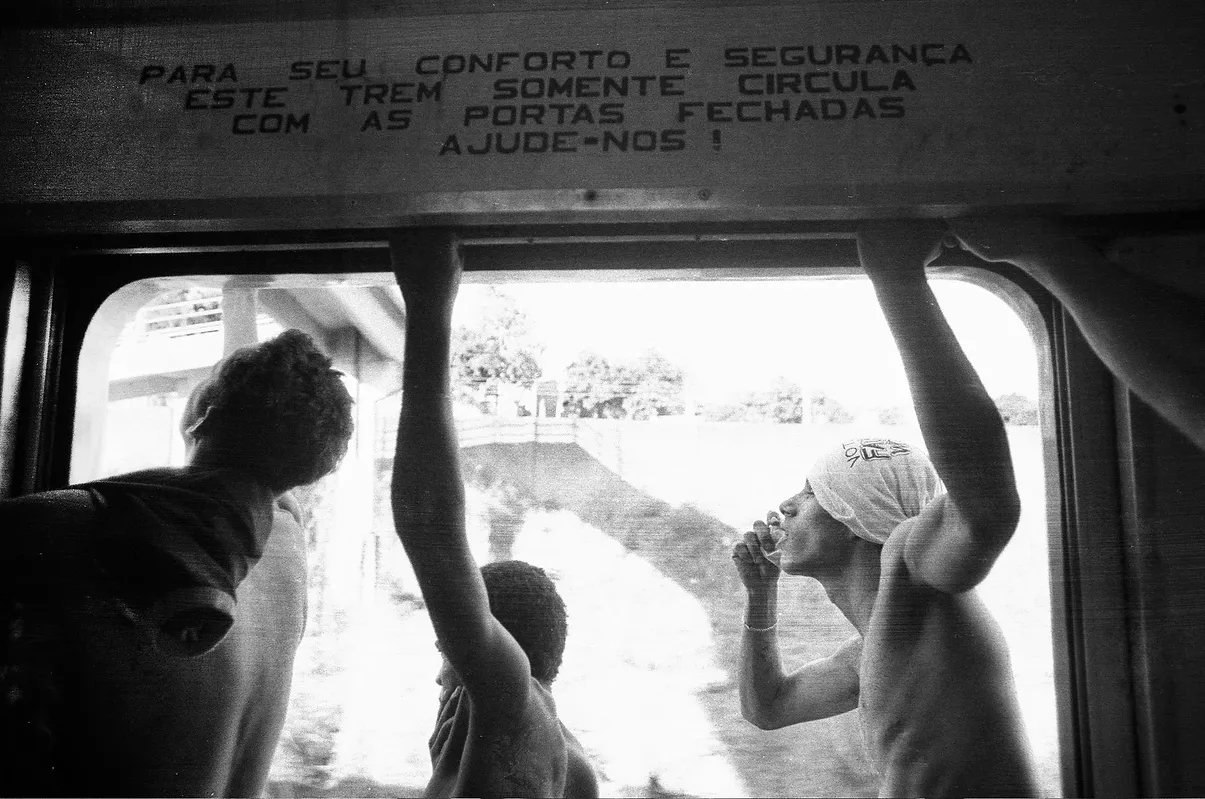
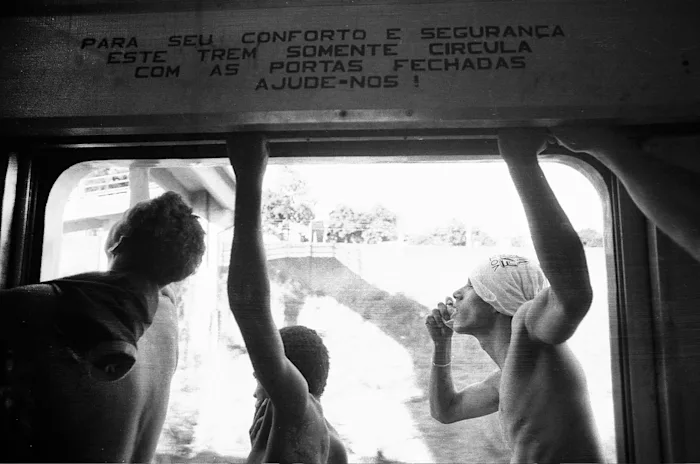
Now, as for whether or not the right has a “natural” upper hand in the hinterland, or specifically in the “far” hinterland: absolutely not. Let’s return to the example of Hezbollah. Most people know about Hezbollah’s origins and ascent in fighting the Israeli occupation of Southern Lebanon. But what gets ignored is the fact that, prior to this, the dominant organizing force in the southern far hinterland was the communist party. Hezbollah’s ascent was a multi-directional battle: fighting Israel, fighting the communists, fighting the government. This is a story repeated across the middle east, of course. The right wing has no natural claim to the far hinterland, and certainly not to the hinterland in general. In fact, in many places, its ascent was only made possible by ample foreign funding in the name of anticommunism. I think this reality is actually well illustrated in Turkey, where you have the AKP with its far hinterland base on the one hand and the Kurds with their far hinterland base on the other. The hinterland is an open battlefield.
That said, I do think that settler-colonial countries like the US are positioned somewhat differently and, in these cases, the predisposition toward the right has been stronger. It’s important to remember that even many of the historic left wing forces in the US basically accepted the settler program and many of the early American anarchist and socialist utopian projects, for instance, were quite literally white settler projects that often directly displaced indigenous people — and I don’t mean in the general sense that we all occupy indigenous land or whatever it is people say at the beginning of board meetings nowadays, but in the literal sense of anarchist communes being built on important seasonal sites that were still in use up until that point. Anyone taking inspiration from this history has to acknowledge that there’s always been a powerful overlap between the white settler utopia and the socialist one. This also means that even nominally left wing politics in the US has often tended to have a right wing presumption at its core.
But this often leads to a false understanding of how this right wing ideology is continually produced in the US and, in particular, the fact that the process changes over time. People may recognize that settler colonialism is an ongoing project, for example, but they tend to conflate the inaugural stage of that project — the literal process of settlement and its immediate aftermath — with the mature stage of its maintenance and what we might optimistically think of as its advancing senility or, more pessimistically, as the periodic crises and reinventions that the process of racialization undergoes when it hits certain material limits. At every point, the nature of the right wing imaginary transforms.
Initially, that right wing core is extremely powerful and the material rewards that accrue to certain fractions of the proletariat over others (ordered via the racial hierarchy) are substantial. That’s why settlement is so important in this mythos — because the plot of land was the first real currency defining social power according to race, the obverse of the extermination or enslavement doled out to non-settler segments of the population. This right wing core has historically been so powerful that the settler myth cross-pollinated with the socialist imaginary to a substantial degree. As it matured, it remained a powerful mythos and helped to generate the particular type of American imperial chauvinism and white mob violence that defined the 20th century. It’s not coincidental that so many of these racial conflicts were expressed as questions of policing landed property and property values.
At a certain point, however, the material underpinnings that upheld this mythos begin to grow more fragile. Racialization enters into periodic crises that can only be solved by a reconfiguration of its coordinates. The utopia of the white settler begins to rot on the vine. It can’t do otherwise, of course, because it was always a mirage dangled in front of the eyes of the proletariat, dividing fractions of the dispossessed from one another. But the mirage only worked because it seemed real, and even was real in a certain sense: believing in it brought real material benefits for a portion of the population. But it has been more and more expensive for the system as a whole to retain those benefits — especially when these crises have also tended to entail, historically, a widening of who is considered “white.” There is, essentially, another mounting crisis in racialization in the US today that is unsettling old certainties. The far-right imaginary today has more to do with the collapse of that old white settler utopia than with its cultivation or preservation.
The very early beginnings of this process are what I document in the book. This is also one reason why I argue that any future far right movement will not initially be recognizable as such. To return to your original question: this is actually why any future far right movement in the US would have to emulate the more active tactics of the Islamists — because those early predispositions toward right wing ideology built into the settler project have matured and grown senile.
A container ship that was wedged in the Suez Canal in the previous months showed us how fragile and vulnerable was the global mesh of material infrastructure. The ship is freed now but it illuminated an inspiration for labor militancy and collective action in the world's logistical choke points as a single ship alone affected 12% of global trade. In the book, you argue that, rather than the ‘creative,’ financialized, or high-tech downtown cores of its global cities, hinterland settlements are the potential site of future proletarian struggles mainly due to their strategic importance in the global web of logistics and their capacity to fundamentally cripple global production and supply chains. What do you think we can do to get prepared for these potential clashes? What are the possible strategies for communists to organize in the hinterland?
This is probably the biggest question, of course. And unfortunately I don’t have any clear-cut answers. Obviously, the question of possible strategies really depends on the local conditions. In other words, who is the “we” in these sort of questions? Because the reality is that if you are talking about like five people, I don’t think “communist strategy” is the correct word, it’s a little too grand in its implications. Most of the time we need to be more mundane and a lot more earnest. In places like the US, the general level of organization among communists is so abysmally low that it’s tempting to say that any sort of organizing is a step forward — of course, the problem is that people often build strange little cults and call it “organizing,” so this is often bad advice. But let’s be realistic: in most American cities the “we” in this sense is abysmally small. Maybe on paper there are a lot of people interested in this stuff, but in terms of people able and willing to do any sort of competent work? It’s very few. Yet there’s this idiotic sense of grandeur.
In other countries, a much greater organizational capacity may exist, but in an extremely fragmented form. In these conditions, there’s a strong temptation to overcome this fragmentation through a coalitional politics formed around the most minimal gains, such as electing some inevitably disappointing social democratic party to power. This of course fails and then everyone forgets about it until the time comes for it to happen again. Communists rarely have enough actual influence within these coalitions to survive their collapse. Joining these sort of lowest-common-denominator coalitions effectively euthanizes any communist group, because so much of the group’s energy gets devoted to these bland liberal projects that you can no longer tell the difference. This is all justified in terms of winning over recruits or some nonsense. But really the numbers don’t ever show this happening.
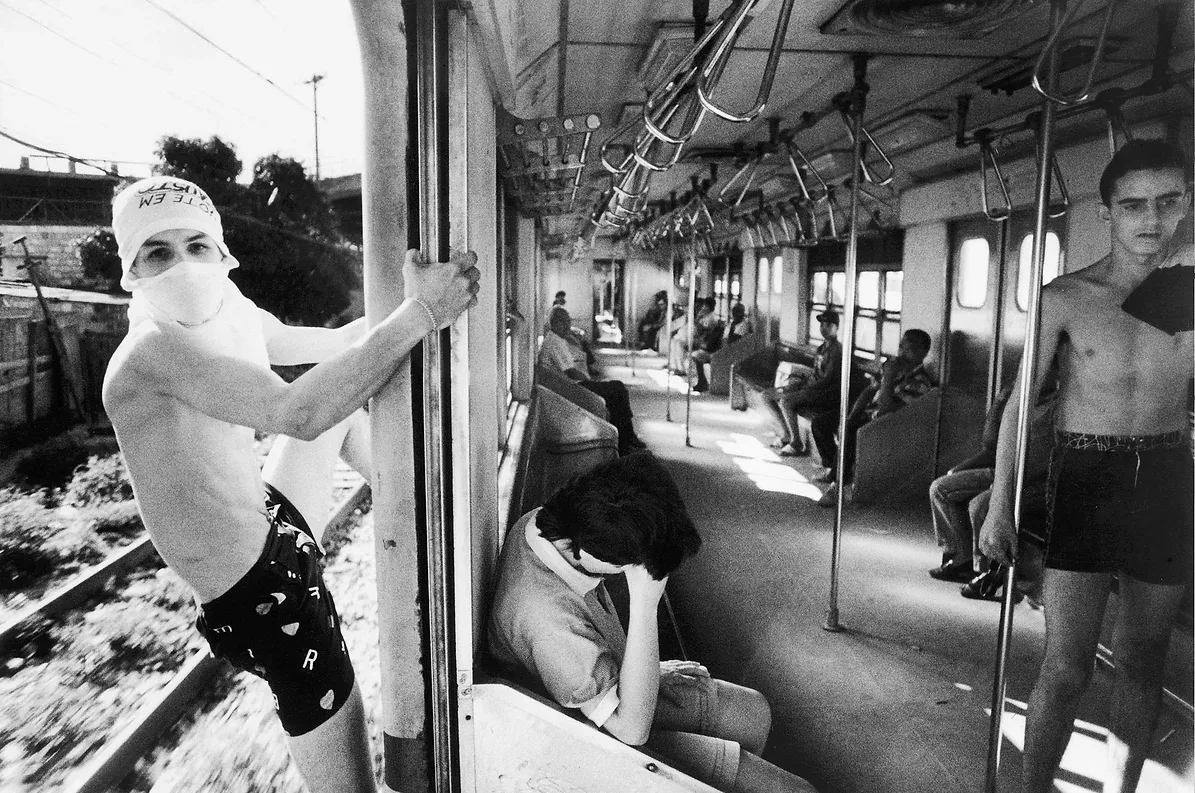
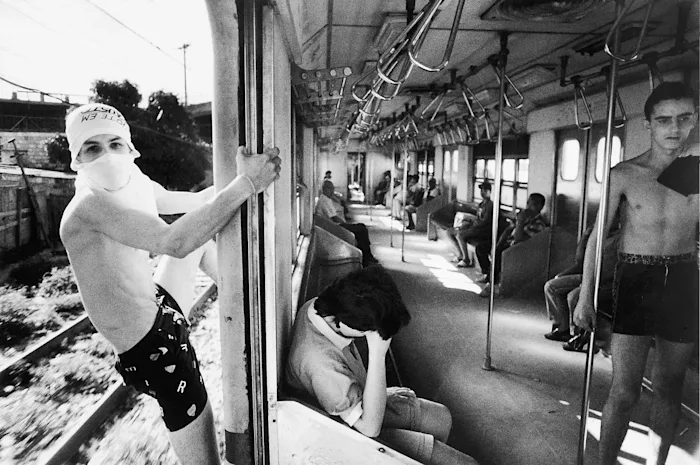
At the same time, there’s clearly a lot of people at least somewhat interested in substantial social change in the US and worldwide. There are far more people explicitly or at least potentially interested in communism than there were even just a decade ago. And yet no existing communist groups seem to have been in any sort of position to benefit from this. Even the anarchists have largely failed to pull in these people in any real numbers, in contrast to the dominance of anarchism within these smaller left wing social scenes in the early 2000s. And of course the many socialist cults with their remnant “democratic centralist” structures — in the US they’re almost exclusively Trotskyist — which were supposed to be designed to recruit in this exact fashion (pulling in students and bright-eyed progressives) have failed abysmally.
In contrast, it was the most open, vague and bare-bones organizations that benefited at the large scale: groups like the DSA, and you could maybe categorize Podemos in Spain in this fashion. Of course it’s miserable, because the actual political thrust of such groups is nothing other than conventional liberalism, slightly to the left of the centrists. But there’s actually something informative here, because the real vitality of a group like the DSA has nothing to do with its minor electoral victories: instead, it’s about their educational initiatives, their cultural presence, the fact that their members actually get out and do things (even if mundane, things like door-knocking have a certain presence to them) and they even, god forbid, sometimes just listen to regular people’s complaints without immediately trying to convert them into some ideological currency.
Now, after that pessimistic picture, I will say that I think there has been some success among certain communist and anarchist fractions in the same respects, but at a smaller scale. There are small groups and networks of people in many countries that have begun to treat communist practice in a literal way again: emphasizing practical effort over ideology and moral quality. But of course these aren’t big organizations with name brands. We’re still talking about small groups of people here and the big advance that I’ve seen is that some of these small groups are at least recognizing the fact that they’re small groups and not big strategy-setting organizations. Once that recognition comes, you can’t really help but take a pragmatic orientation, emphasizing education, skill-building and an openness toward the outside, etc.
We know that you are skeptical about the usefulness of occupations of parliaments or parks in front of financial centers. In your interview with Paul Mattick you make a distinction between the “politics of visibility” and the “politics of power,” stating that because the hinterland is largely invisible, it is not attractive for a symbolic politics. When we shift the emphasis from visibility to questions of power, it’s clear that the near hinterland is of central importance. From this perspective, how should we think about the ongoing wave of global insurrections? Have we seen a shift in contemporary struggles from the city to the hinterland? For example, in Turkey there are more and more strikes and workers’ resistance movements in the near hinterland, but they rarely link up with mass politics. Do you think there is a way that urban struggles can be made useful to a politics of power?
In the US, this has still been a major limit. Even while there were rebellions across hinterland cities in the US — places like Rockford, Kenosha, and Rochester — they still tended to gravitate toward the empty centers of these smaller cities, even while major disruptions would have been possible. The big case study here is Louisville, Kentucky, of course, because everyone was assuming the verdict of the Breonna Taylor case would set off another cycle of riots there and the city is host to the UPS Worldport. Shutting that freight airport down would have been a major leap in scale. But it didn’t even come close to happening, because the protests got directed into a tiny little empty downtown, filled with heavily armed police.
It’s also notable that two of the major late-stage rebellions occurred in inner ring suburbs: Kenosha, Wisconsin, and Brooklyn Center, outside the Twin Cities in Minnesota, where the summer’s uprising began. But unlike what had happened in Ferguson years prior, these suburban riots were immediately met with immense state force and, in the case of Kenosha, also substantial right wing mobilization. Partially, this was just because the entire Minneapolis and Milwaukee areas had already seen massive police mobilization over the previous months, so departments in all the surrounding cities were prepared for this sort of thing. But I think it also speaks to the fact that those in power did learn from their failures in Ferguson. The democrats have been actively building up their capacity for soft-repression in these neighborhoods and money and training have been funneled into suburban police departments even more rapidly.
But you’re right, in other countries I think the thesis has actually played out much more literally. I recently wrote a preface for the French edition of Hinterland, for example, and the Yellow Vests are an obvious point of reference. The real definitive thing about these sort of hinterland revolts is that even when they involve what seem to be explicitly “political” activity like strikes, riots, blockades, etc., they nonetheless still have this very distinctive “apolitical” character. Of course it’s not really apolitical, it’s pragmatic, it places action first and decides ideology later, because it recognizes that no one has good answers, intellectually, to the question of “what should be done” today. And of course this makes all the absolutely banal, insufferable leftists scream “fascism!” But it’s no loss: such movements are far better off without the left involved. At the same time, they’re much better off if communists can get involved. And that means that communists must shed all the baggage they inherited from these leftist social scenes. They have to abandon that arrogant, holy attitude and become open, humble and actually learn some skills too, so they’re worth having around.
In Hinterland you quite rightly state that “the character of production sculpts the character of class.” Today, we talk about essential proletariat, precariat, outcast or wageless workers, concepts like global factory or even post-industrialization. It is clear that class formations are in constant change. How would you define the actual class composition of the global proletariat? Which section(s) of the proletariat do you see as the bedrock of today’s and near future’s communist movements, or, as you refer to these struggles in marxian terms, “the historical party”?
The revolutionary subject is only composed in the course of the revolution. If a revolution is gestating, then this subject gestates along with it. But without a revolutionary situation or at least clear signs that one is about to be born, you can’t really speak of any pre-ordained base for a future revolutionary movement. This is never how revolutions have really worked in the past. Even where you might point to a particular case like the Chinese revolution and say it had a “peasant” base, that’s actually a dangerous oversimplification. In fact, among the many different forms of local subsistence (i.e. the many different forms of “peasant” life) that existed in mainland East Asia in the lead-up to the Chinese revolution, the communists had a much easier time organizing in certain regions, as compared to others. This was especially important early on! And it had to do with all kinds of local contingencies, such as the strength of pre-existing social bandit groups, the ability to organize among particular fractions of the industrial proletariat such as railway workers (who had more contact with more people in more places) and the local detail of how, exactly, class relations were structured on the ground in particular places. In retrospect, it’s obvious that any revolution in that part of the world would have a “peasant base” since the vast majority of people were peasants there at the time. But that doesn’t give us any insight whatsoever into which fractions of the peasantry and early industrial proletariat were recruited earliest, which ones proved more essential to the early stages of organizing, and why.
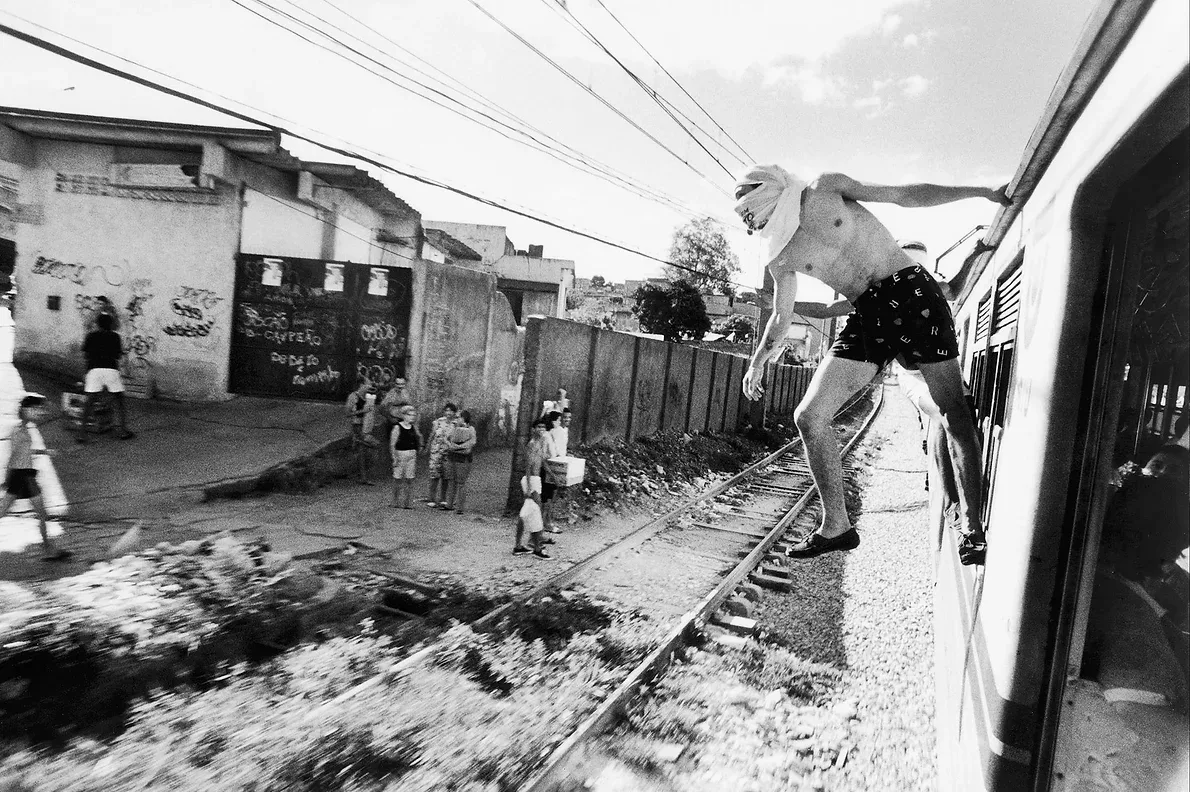
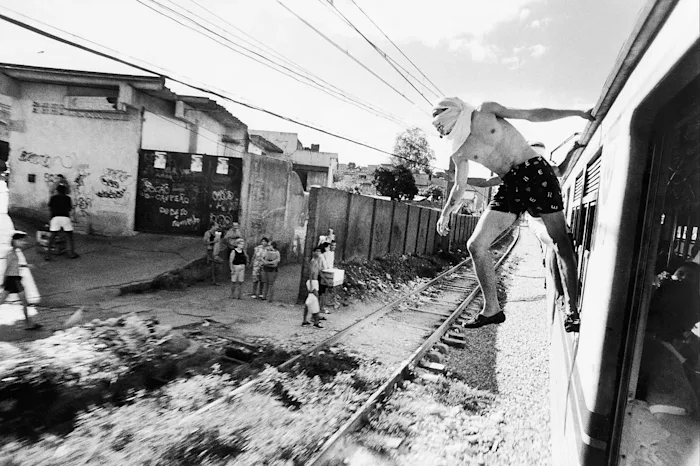
In the same fashion, we can obviously say that we think a revolution will be based among the proletariat today, but that’s not really saying anything, because the vast majority of the people in the world are proletarian. This also seems like a double-bind, because ensuring that future revolutions have a communist character requires that communists engage in this process in a way that encourages this outcome, even considering that, at their start, very few of these activities will immediately clothe themselves in the proper language and attitude of “conscious” political actors. I have absolutely no faith in the hand-wavey proposition that history will generate a communist outcome serendipitously, or that the “historical party” on its own is enough. That’s sort of like walking up to someone fishing in a river and noting that there are fish in the river regardless of whether or not the person is fishing. This is either a misunderstanding of purpose or a more questionable claim that we ought to just wait for the fish to be cast up by the current to settle at our feet. This rustic metaphor is somewhat stupid, but you get the point.
I am actually very “orthodox” here, insofar as I think that formal, practical parties (what Bordiga called “ephemeral parties”) are important and that, taken together, the formation of an ecosystem of these practical parties, insofar as they are rooted in the historical party and move with it, constitute what we call a communist party — and that a communist party is necessary to having a communist revolution, whether you call it that or not. No communist party exists today, of course! We’re instead at a stage where very small groups of individual communists and people in their orbit have been buoyed by the eruptions of the historical party, or quite literally converted to communism through these eruptions. In these conditions, they’ve been experimenting with putting together relatively small-scale practical or “ephemeral” parties in an attempt to root themselves in the stuttering motion of the historical party, surviving the trough that comes after the wave and trying to interlink with other small, practical parties to form what we might think of as a potential mycelial network capable of undergirding the communist party to come (we can hope). Figuring out where this sort of preliminary communist activity can take root the easiest and be the most fruitful is an experimental process. As in any experiment, however, you can’t let rigid dogmas limit your inputs ahead of time or blind you to the actual outcomes.
This is really a simple point, but it requires repeated emphasis. There are obviously certain places that are more and less auspicious for early-stage communist organizing. But finding out where these places are requires experimentation. Yes, part of that is intellectual: forming a hypothesis requires thinking about where the application of very limited resources might yield the largest early returns and why. But hypothesizing isn’t enough on its own. You have to then go and try. We can say that there are two common, symmetrical errors here: the first is formulating endless hypotheses and conducting zero experiments. The second error is the endless call to “organize” without much thought or analysis, either beforehand or afterwards. This is kind of like conducting a million haphazard experiments but never writing down their results or, even if you do, never processing the data.
In terms of hypothesizing, we have to be careful about what we’re talking about. A lot of people conflate the question of “who might be most integral to the success of a communist revolution” with “who might be the most amenable to participating in a communist movement in its gestation” and these are two extremely different things. This is where the confusion about logistics workers arises — and we could extend that to any definition of the “essential” proletariat. Yes, obviously it’s strategically very important to organize among such workers. Shutdowns at their firms have cascading effects across the production chain, warehouses (as well as schools and hospitals) tend to host some of the largest geographic concentrations of workers in most American cities, and of course logistics workers in particular have played very important roles in communist organizing historically.
So we might say that such workers will be very integral to success, ultimately. But that’s not the same as demonstrating that these workers have shown more interest than others in organizing — and certainly there’s no evidence that logistics workers seem particularly amenable to communism. Instead, the point I make in Hinterland is that it’s significant that the geographies of unrest that exist in the US — these rising riots that have increasing participation from young people who live in these newly impoverished suburbs — are beginning to have an overlap with the geographies of the logistics industry. I don’t think it was clear enough in the book, so let me make it clear here: this doesn’t mean that I’m predicting immediate mass strikes among logistics workers! Instead, I’m pointing out that if you have a bunch of young people from these suburbs rioting over police murders and these riots seem to be slowly centering themselves on these very suburban spaces, how much longer is it really going to be before you see that activity collide with this logistics infrastructure?
Similarly, what happens to all these working class neighborhoods if the next economic crisis or simply some technical shift begins to wipe out employment in these very firms? Right now, the reality is that the most economically active logistics suburbs are some of the few places where workers with low levels of education can readily find decent-paying work. Obviously it could pay better and there could be many workplace improvements. But I think it’s a little absurd when people read those last chapters of the book as if I’m forecasting a new labor movement emerging from the logistics sector, based around these marginal demands for wage increases and health protocols. Sure, those demands might be met and there will almost certainly be increased organizing in the sector. But that’s really not what I’m talking about. After all, most of the stories I narrate from the near hinterland aren’t about working in warehouses, they’re about being homeless or in jail. The book is about crisis and collapse, after all. I’m asking: what happens to these places as everything breaks down, how will they weather the next waves of unemployment, and what kind of divides can we see, generationally, between youth raised in these neighborhoods in contrast to their parents, who moved there from elsewhere?

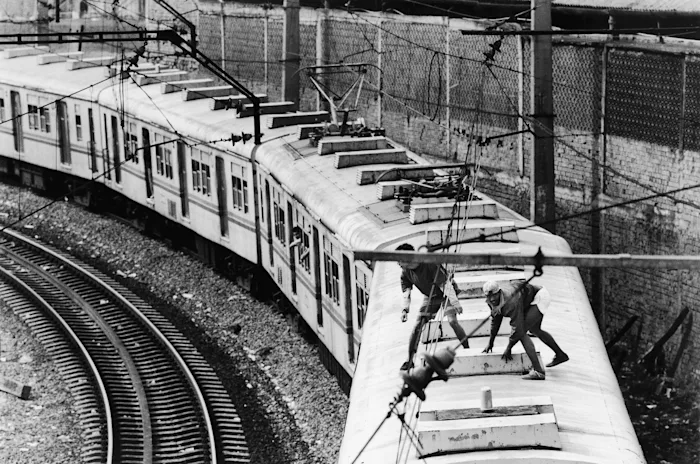
Of course, there is a case to be made that these are sites where communist organizing can have more influence because there is evidently a strong grassroots trend of self-organization among certain sectors of the logistics workforce. At the same time, the Bessemer, Alabama unionization campaign seems to signal that traditional unionization drives may not be the best strategy here. There are many reasons for this, but my experience suggests that most workers are understandably suspicious of unionization because they simply don’t see how these mainstream unions will protect them — and they’re right, because in the US unions are essentially toothless. So I think this case needs to be demonstrated in practice. My intuition is that tenant organizing campaigns in the same neighborhoods have actually been more successful than these union campaigns among logistics workers, both in the sense of how many people tend to get introduced to radical ideas in the course of the campaign and in the sense of how many “wins” that such organizations have been able to secure. The tenant and neighborhood organizing strategy, especially combined with workplace campaigns, might have more long-term potential in some of these suburbs, especially since it will provide more useful infrastructure if firms were to close down or engage in mass layoffs or if there is some new climate catastrophe.
The current conditions and revolutionary potential of the hinterland are also closely tied to the ecological situation today. You offer a deft portrayal of the disaster economy in relation to the growing wildfires in the American hinterland through your own experience. Today, under Turkey’s oppressive regime, the most prominent struggles in the rural areas are those against deforestation and hydro-electric plants. There are also similar movements and occupations in other parts of the world, such as the ZADs in France. What do you think about these struggles and their potential influence on the class clashes in the global hinterland?
People tend not to have as much knowledge of this, but last century in the US the early environmental movement actually found its base among workers in the extractive sectors and within the communities that depended on them. Aside from Indigenous organizers, some of the earliest advocates for sustainable forestry, for example, were unions such as the International Woodworkers of America. In general, the idea that it was destructive rural workers in these sectors clashing with distant urbanites over the environmental policies of the latter 20th century is overly simplistic and, in many cases, just outright wrong.
But it is true that a particular “environmentalism” based among urbanites and mobilizing the intervention of federal and state government is more or less the sole “environmentalism” that emerged from these battles in a dominant position. This is the “environmentalism” that we inherited, but it is one that hardly merits the name. It has been dominated by both an uninformed (and deeply anti-indigenous) notion of “untouched” nature and by a deep resentment of rural workers and rural poverty, tending to denigrate community forestry, indigenous land management (including widespread controlled burns and cultivated planting of forage crops) and utterly malign rural people’s demand for means of subsistence. It has also, of course, been bankrolled by a particular subset of urban industrialists.
In the US in particular, this has meant that many struggles over the past few decades for dam removal, against further deforestation, against the opening of new mines, etc. have tended to pit the poorer people who live in the area (and who suffer some of the most direct consequences) against outsiders (often from faraway cities) who oppose the project alongside a minority of locals who have lucrative jobs with some federal agency. The basis of this opposition is that those opposed to such projects have not been able to offer any alternative modes of subsistence to those living in rural areas. People in these areas don’t necessarily want their backyard denuded by some logging company. But, as I’ve said elsewhere: the economy is a hostage situation. They understand that in this world they need a job to survive. This is very important, in the context of my book, because I point out that it’s the illusion of jobs in revived rural industry and agriculture that helps attract people to the far right in these locations. It’s not coincidental that their real funding base can be found among petty industrialists: the small-scale business owners in mining, ranching and logging.
Now, that said, it does seem like some of these other examples show a possible way out of this conundrum. The ZAD is interesting precisely because it goes against this trend, insofar as it was able to both recruit locals into the campaign, and insofar as many of those who were initially “outsiders” committed so much time and effort that they can’t really be characterized in this way any longer. So maybe, in a certain respect, these movements might give us a window into potential paths forward in organizing within the far hinterland. But it does seem that they’re still fairly limited and many of their successes can be attributed to contingent factors that allowed an easier alliance to be struck across the different fractions involved.
In your article “Crowned Plague” about the Covid pandemic, you quoted from Chuang’s piece “Social Contagion”:
In a strange way, the subjective experience is somewhat like that of a mass strike — but one which, in its non-spontaneous, top-down character and, especially in its involuntary hyper-atomization, illustrates the basic conundrums of our own strangled political present as clearly as the true mass strikes of the previous century elucidated the contradictions of their era. The quarantine, then, is like a strike hollowed of its communal features but nonetheless capable of delivering a deep shock to both psyche and economy.
This is a strong yet questionable statement. At the end of your article, you also define the acts of communal solidarity that were engendered by the pandemic as a brief opening to the idea of communism. This reminds us of Benjamin’s messianic moment or Jameson’s utopian fractures “through which another picture of the future and another system of temporality altogether might emerge.” Can disasters have such a potential? After a year of worldwide state of emergency, how do you see the situation now? What have been the effects of the pandemic on the global hinterland?
I began writing that piece before the George Floyd rebellion started and this was a nagging concern in the back of my mind throughout: what if this quote is a bit too optimistic? What if the effects of the lockdown are just negative? And then of course the hot summer ignited right before the piece was going to press and I think the sentiment was more than vindicated. I would argue that the experience of the lockdown was extremely important in conditioning that rebellion, even if it was just because millions of people who were normally too busy to really think much about how the world works were suddenly thrown out of their jobs and confronted with immediate political questions everywhere they looked.
After a year of the state of emergency, this is even clearer. It’s really hard to overstate the degree to which general public discourse and the baseline political imaginary has been transformed. Topics like police abolition, which were once the focus of very, very small and marginal groups of radical activists, are now mainstream points of discussion. Obviously, that means the terms are being watered down and used to stoke conservative moral panics. But it’s a huge change and I think that, even though we probably would have gotten there regardless, the pandemic accelerated the timeline a bit. Even just the fact that many people got to have this brief period where they were able to survive without working every day — that’s huge.
You have to remember that, in the US, getting unemployment used to be extremely difficult. You can’t “go on welfare” anymore, regardless of the fact that many conservatives seem to think you can. As soon as you stop working your income disappears. And many people were convinced that this was a natural, unavoidable fact of life! Then, all of a sudden people were confronted with the basic realization that we, collectively, have more than enough to support everyone and that it is a political reality that we don’t do this regularly.
Altogether, this is all an illustration of the fundamental communist point that it’s only in moments of disaster and upheaval that the real horizon of what is possible can be glimpsed. You ask if disasters can have such potential and I would say that it is really only disasters that do. Only these massive breakdowns in the way that everything works offer any real hope. Change is never incremental, it’s punctuated, defined by threshold events. And these quick punctures in the status quo cannot help but appear to be disastrous from any perspective that has rooted itself in that status quo. But if we are communists, we aren’t rooting our hopes and expectations on the assumption that things must stay the way they are and change a little at the time. That’s the losing equation of the centrists and social democrats, who just disagree with one another about the pace of that gradual advance. Our fidelity is instead to those moments of rupture, because they are the things that demonstrate that humans have a collective capacity to do things differently, and that we obviously have more than enough material resources to provide for everyone. These are the rifts in which power must be built and multiplied.
September 2021
Images: Rogerio Reis